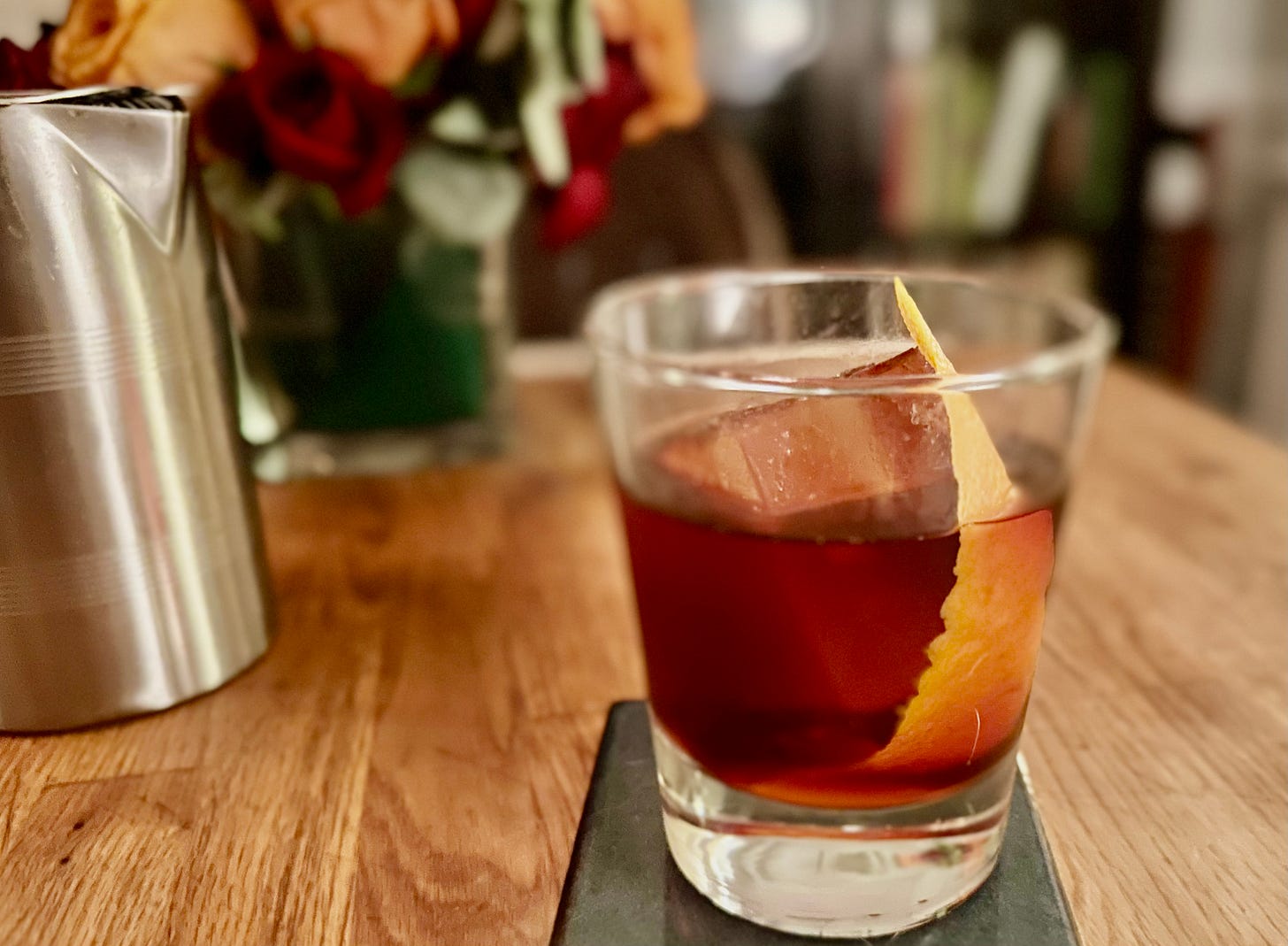It’s Not Quite Negroni Week, So Here’s a Not Quite Negroni.
Rum, mezcal, and a pair of bitter liqueurs in a delicious stirred-and-boozy cocktail that doesn’t conform to the standard Negroni formula.
Negroni Week is almost upon us. But it’s not here yet.
So for this week’s newsletter, we’re going to make a cocktail that is not quite a Negroni. Indeed, it’s not quite anything — except itself.
The original Negroni is a stirred, boozy, bittersweet cocktail built on a simple equal parts ratio. In its most elemental form, it’s just one part gin, one part sweet vermouth, and one part Campari. Bartenders have, of course, altered that structure in ways large and small, swapping out gins and vermouths, using differing bitter liqueurs in place of the Campari, and toying with the ratio, often by bumping up the gin, as in my favorite rendition of the drink.
When these variations are small — a swapped vermouth or a slightly larger portion of gin — they typically come out as just Negronis, with no name changes. (There are formalists who will insist that the drink can only be called a Negroni if it’s made with equal parts. In The Negroni, the great cocktail scribe Gary Regan wrote that he would “fight to the death for their right to say that, but they’re wrong.” I concur.)
When these variations are large — new base spirits or modifiers, sometimes with significant ratio retrofits — they tend to get their own names. Some, like the Boulevardier — a Negroni with bourbon or rye whiskey instead of gin — are fairly famous in their own right. Others are more obscure. We’ve looked at more than a few of these in this newsletter.
But in general, Negroni variations tend to retain at least one formal element or idea from the original drink. They use a spirit, a vermouth, and a bitter liqueur, or three equal parts with a spirit base and a bitter element or two.
This week’s drink doesn’t fit the mold. It uses two different base spirits and no sweet vermouth at all. It contains a bit of dasher-bottle bitters, along with two different bitter liqueurs. The ratio doesn’t quite conform to any other cocktail I’ve ever seen, although it certainly has some similarities with a number of Negroni-adjacent drinks.
It’s an odd drink in some ways, but it’s also a standout from within the universe lesser-known liquid creations. It’s smoky-sweet, with bitter, herbaceous, citrus-y undertones and a funky-fruity note. It’s intense enough that it probably won’t turn a Negroni hater into a fan, but it is a drink I make for friends when I want to show them a flavor combo they’ve never had before without having to whip up any custom ingredients, since all the ingredients are purchased off the rack. It’s a case study in both splitting base spirits and combining bitter bottles. And it shows how far you can stretch the underlying concept of the Negroni — strong spirits modified with complex bittersweet elements — while still producing something delicious and memorable.



